|
Books Should Be Free Loyal Books Free Public Domain Audiobooks & eBook Downloads |
|
|
Books Should Be Free Loyal Books Free Public Domain Audiobooks & eBook Downloads |
|
Travel Books |
|---|
|
Book type:
Sort by:
View by:
|
By: Alexander Kinglake | |
|---|---|
 Eothen, or Impressions of Travel brought Home from the East
Eothen, or Impressions of Travel brought Home from the East
A classic of Victorian travel writing, Kinglake’s book describes his journey through the Ottoman empire to Cairo, and his residence there in time of plague. | |
By: Kate Douglas Wiggin (1856-1923) | |
|---|---|
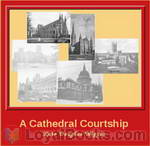 A Cathedral Courtship
A Cathedral Courtship
A romantic comedy. A pretty young American girl tours English Cathedrals, with her very blue-blooded Aunt. Then boy meets girl. Boy chases girl. Boy loses girl. Boy finds girl. Finally, girl catches boy with the help of a mad bull. | |
By: Lavinia Honeyman Porter | |
|---|---|
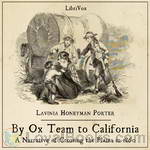 By Ox Team to California - A Narrative of Crossing the Plains in 1860
By Ox Team to California - A Narrative of Crossing the Plains in 1860
Imagine a young, twenty-something woman in 1860, reared “in the indolent life of the ordinary Southern girl” (which means she has never learned to cook); married to a professional man who knows “nothing of manual labor;” who is mother to a young son; and who has just found out she is pregnant with their second child. Imagine that this couple has become “embarrassed financially” by “imprudent speculations,” and that they are discussing what to do. They decide to buy a wagon and three yoke of unbroke oxen and head overland to California... | |
By: Henry Vizetelly | |
|---|---|
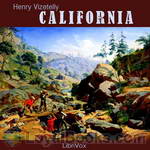 California
California
Vizetelly, writing under the pseudonym J. Tyrwhitt Brooks, recalls an expedition to California he took between 1847-1848 . Originally, he planned to enlist as a surgeon for the US Army during the Mexican war, but conflicts had ended by the time he applied. In a quick change of plans, he joined a group of prospectors on their way to the newly found gold fields of California. While he might not find service in the military, his training as a physician made him a valuable addition to the ragtag team of explorers... | |
By: Watkin Tench (1758-1833) | |
|---|---|
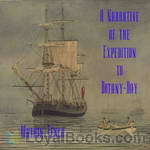 A Narrative of the Expedition to Botany-Bay
A Narrative of the Expedition to Botany-Bay
Watkin Tench was an officer of the British Marines in the First Fleet to settle NSW. This is an interesting and entertaining account of his experiences during that time (Introduction by Tabithat) | |
By: Richard Francis Burton (1821-1890) | |
|---|---|
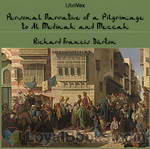 Personal Narrative of a Pilgrimage to Al-madinah and Meccah
Personal Narrative of a Pilgrimage to Al-madinah and Meccah
Sir Richard Francis Burton (1821 – 1890) was an English explorer, translator, writer, soldier, orientalist, ethnologist, linguist, poet, hypnotist, fencer and diplomat. He was known for his travels and explorations within Asia and Africa as well as his extraordinary knowledge of languages and cultures. According to one count, he spoke 29 European, Asian, and African languages.Burton's best-known achievements include traveling in disguise to Mecca, The Book of One Thousand Nights and A Night, an... | |
By: Alvar Núñez Cabeza de Vaca (ca. 1490/1507 - ca.1557/1579) | |
|---|---|
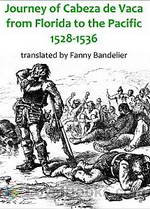 The Journey of Alvar Núñez Cabeza de Vaca
The Journey of Alvar Núñez Cabeza de Vaca
Few stories of shipwreck and survival can equal that of the 16th century Spaniard Alvar Núñez Cabeza de Vaca who, cast ashore near present day (USA) Tampa Bay, Florida, in 1528, survived eight years of hand-to-mouth existence among the Indians of the South and Southwest, and who walked on foot across the plains to the Pacific Coast, arriving in Mexico in 1536. In 1542 he published an account of his adventures, and the present reading is based on Fanny Bandelier’s English translation of that text... | |
By: May Kellogg Sullivan | |
|---|---|
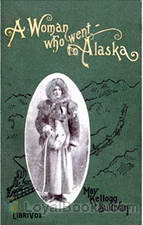 A Woman Who Went to Alaska
A Woman Who Went to Alaska
Alaska has only been a state since 1959, and the breathtaking terrain remains mostly unspoiled and natural. In modern times, many of us have had the pleasure of visiting Alaska via a luxurious cruise ship, where we enjoyed gourmet meals, amazing entertainment, and a climate-controlled environment. It's easy to also book a land package that enables you to see more of the country by train.Imagine what it was like to visit the same wild, untamed countryside in 1899. Instead of boarding a sleek, stylish cruise ship, you travel for weeks on a steamer... | |
By: Edward Granville Browne | |
|---|---|
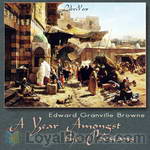 A year amongst the Persians; impressions as to the life, character, and thought
A year amongst the Persians; impressions as to the life, character, and thought
Edward Granville Browne (1862 – 1926), born in Stouts Hill, Uley, Gloucestershire, England, was a British orientalist who published numerous articles and books of academic value, mainly in the areas of history and literature. His works are respected for their scholarship, uniqueness, and style. He published in areas which few other Western scholars had explored to any sufficient degree. He used a language and style that showed high respect for everybody, even toward those he personally did not view in positive light... | |
By: Thomas Dowler Murphy (1866-1928) | |
|---|---|
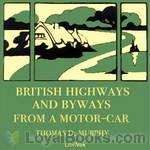 British Highways And Byways From A Motor Car
British Highways And Byways From A Motor Car
In this chronicle of a summer's motoring in Britain I have not attempted a guide-book in any sense, yet the maps, together with the comments on highways, towns, and country, should be of some value even in that capacity. I hope, however, that the book, with its many illustrations and its record of visits to out-of-the way places, may be acceptable to those who may desire to tour Britain by rail or cycle as well as by motor car. Nor may it be entirely uninteresting to those who may not expect to visit the country in person but desire to learn more of it and its people. (Introduction by Thomas Dowler Murphy) | |
By: Apsley Cherry-Garrard (1886-1959) | |
|---|---|
 Worst Journey in the World, Vol 1
Worst Journey in the World, Vol 1
The Worst Journey in the World is a memoir of the 1910–1913 British Antarctic Expedition led by Robert Falcon Scott. It was written and published in 1922 by a survivor of the expedition, Apsley Cherry-Garrard, and has earned wide praise for its frank treatment of the difficulties of the expedition, the causes of its disastrous outcome, and the meaning (if any) of human suffering under extreme conditions. | |
By: Mary Hunter Austin (1868-1934) | |
|---|---|
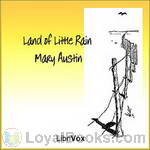 The Land of Little Rain
The Land of Little Rain
The Land of Little Rain is a book of sketches which portray the high desert country of southern California, where the Sierras descend into the Mojave Desert. Mary Austin finds beauty in the harsh landscape: "This is the sense of the desert hills--that there is room enough and time enough. . . The treeless spaces uncramp the soul." Her story begins with the water trails that lead toward the few life giving springs--the way marked for men by ancient Indian pictographs. Life and death play out at these springs... | |
By: Edward Whymper (1840-1911) | |
|---|---|
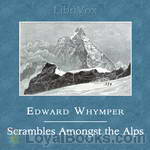 Scrambles Amongst the Alps in the Years 1860-69
Scrambles Amongst the Alps in the Years 1860-69
Scrambles Amongst the Alps is one the great classics (some would say the greatest) of early mountaineering literature, and Edward Whymper (1840-1911) one of the leading figures of the early years of Alpine climbing. He is best known, of course, for his many attempts on the Matterhorn, and for the loss of four members of his climbing party after the successful first ascent of the peak in July, 1865. Although the Matterhorn stands in ways in the center of his book, there are descriptions of many other ascents as well, in the Alps of France and Italy, as well as those of Switzerland... | |
By: Richard Henry Dana, Jr. (1815-1882) | |
|---|---|
 Two Years Before the Mast
Two Years Before the Mast
| |
By: George Dunderdale (1822-1903) | |
|---|---|
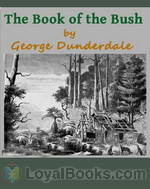 The Book of the Bush
The Book of the Bush
While the world was young, nations could be founded peaceably. There was plenty of unoccupied country, and when two neighbouring patriarchs found their flocks were becoming too numerous for the pasture, one said to the other: "Let there be no quarrel, I pray, between thee and me; the whole earth is between us, and the land is watered as the garden of Paradise. If thou wilt go to the east, I will go to the west; or if thou wilt go to the west, I will go to the east." So they parted in peace.(excerpt from book) | |
By: Isabella L. Bird (1831-1904) | |
|---|---|
 Unbeaten Tracks in Japan
Unbeaten Tracks in Japan
Isabella Lucy Bird was a 19th century English traveller, writer, and natural historian. She was a sickly child, however, while she was travelling she was almost always healthy. Her first trip, in 1854, took her to America, visiting relatives. Her first book, The Englishwoman in America was published anonymously two years later. Unbeaten Tracks in Japan is compiled of the letters she sent to her sister during her 7 months sojourn in Japan in 1878. Her travels there took her from Edo (now called Tokyo) through the interior - where she was often the first foreigner the locals had met - to Niigata, and from there to Aomori... | |
 Among the Tibetans
Among the Tibetans
Isabella L. Bird was an English traveller, writer and natural historian. She was travelling in the Far East alone at a time when such endeavours were risky and dangerous even for men and large, better equipped parties. In "Among the Tibetans", Bird describes her tour through Tibet with her usual keen eye: From descriptions of the landscape and flora to the manners, customs and religion of the local people we get a fascinating account of a world long past. | |
By: Peter Fisher (1782-1848) | |
|---|---|
 History of New Brunswick
History of New Brunswick
Originally published in 1825 under the title: Sketches of New Brunswick : containing an account of the first settlement of the province, with a brief description of the country, climate, productions, inhabitants, government, rivers, towns, settlements, public institutions, trade, revenue, population, &c., by an inhabitant of the province. The value of this history is in the fact that it was written when the Province was still in its infancy. Although there had been a few small settlements established in New Brunswick prior to 1783, the main influx of settlers were Loyalists who chose to remove to the area from the United States following the American Revolution. | |
By: August F. Jaccaci | |
|---|---|
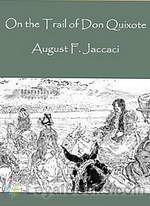 On the Trail of Don Quixote, Being a Record of Rambles in the Ancient Province of La Mancha
On the Trail of Don Quixote, Being a Record of Rambles in the Ancient Province of La Mancha
On the Trail of Don Quixote is an engaging 1890’s “record of rambles in the Ancient Province of La Mancha” by two artist friends, French author August Jaccaci and Spanish illustrator Daniel Vierge. “Both lovers of the book wherein are recounted the adventures of the good Knight and of his faithful Squire,” as Jaccaci explains, the two men set out to record -Jaccaci in evocative prose, and Vierge in pen and ink drawings - their exploration of the landmarks of Cervantes’ “immortal romance... | |
By: Charles Norris Williamson | |
|---|---|
 The Golden Silence
The Golden Silence
Trying to get away from an engagement he had got himself into more or less against his will, Stephen Knight travels to Algiers to visit his old friend Nevill. On the Journey there he meets the charming and beautiful Victoria. She is on her way to Algiers to search for her sister, who had disappeared years ago after marrying an Arab nobleman. With the support of his friend, Stephen Knight decides to help the girl - but when she also disappears, the adventure begins... | |
By: Agnes von Blomberg Bensly | |
|---|---|
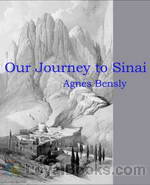 Our Journey to Sinai
Our Journey to Sinai
Fortress-walled Saint Catherine's monastery on the Sinai peninsula has been a pilgrimage site since its founding by the Byzantine Emperor Justinian in the 6th century. According to tradition, the monastery sits at the base of the mountain where Moses received the Tablets of the Law. Set in rugged country, accessible in times past only by a many days journey by camel across barren desert, the monastery survived intact through the centuries, and, as a result, became a rich repository of religious history—told through its icons, mosaics, and the books and manuscripts in the monastery library... | |
By: Arthur Griffiths (1838-1908) | |
|---|---|
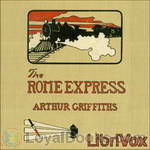 The Rome Express
The Rome Express
The passengers in the sleeping car of the Rome Express were just woken and informed that they will reach Paris soon, and a general bustle fills the train. Only one passenger cannot be awoken by the porter, no matter how loudly he knocks on the compartment door. At last, when the door is forced open, the occupant of the compartment is found dead - stabbed to the heart! The murderer must be found among the passengers... | |
By: William H. Hudson (1841-1922) | |
|---|---|
 Shepherd's Life; Impressions Of The South Wiltshire Downs
Shepherd's Life; Impressions Of The South Wiltshire Downs
Hudson wrote this classic work in 1910; it is admiringly mentioned by many other writers. It focuses on the memories of a head shepherd, Caleb Bawcombe, so it is concerned with the period of mid to late nineteenth century rural Wiltshire, a county in England. This pleasant engaging book contains rural wisdom, natural history, farming practices, human characters, and more | |
By: Dorothy Richardson (1873-1957) | |
|---|---|
 Pointed Roofs
Pointed Roofs
Miriam Henderson is one of what novelist Dolf Wyllarde (in her great work, The Pathway of the Pioneer) termed "nous autres," i.e., young gentlewomen who must venture forth and earn their living after their fathers have been financially ruined. Also, she has read Villette; she thus applies for and is offered a job teaching conversational English at a girls' school, albeit in Germany rather than France. Pointed Roofs describes her year abroad, as she endeavors to make her way in the hotbed of seething female personalities that populate the school, overseen by her employer, the formidable Fraulein... | |
By: Edward V. Lucas (1868-1938) | |
|---|---|
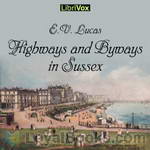 Highways and Byways in Sussex
Highways and Byways in Sussex
A very personal and opinionated wander through the Sussex of around 1900, illustrated with anecdotes, literary and poetic quotations, gravestone epitaphs and a gentle sense of humour. The author colours the countryside with his nostalgia for times past and regret for the encroaching future, his resentment of churches with locked doors, and his love of deer parks, ruined castles and the silent hills.(I must add my apologies for my attempts at the Sussex dialect in the chapter on that subject.)[This book is of Reading Grade of 9... | |
By: Hiram Bingham (1875-1956) | |
|---|---|
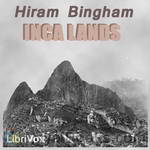 Inca Lands
Inca Lands
Prof. Hiram Bingham of Yale Makes the Greatest Archaeological Discovery of the Age by Locating and Excavating Ruins of Machu Picchu on a Peak in the Andes of Peru.There is nothing new under the sun, they say. That is only relatively true. Just now, when we thought there was practically no portion of the earth's surface still unknown, when the discovery of a single lake or mountain, or the charting of a remote strip of coast line was enough to give a man fame as an explorer, one member of the daredevil explorers' craft has "struck it rich... | |
By: Sir Francis Galton (1822-1911) | |
|---|---|
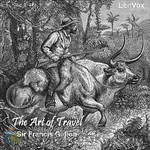 The Art of Travel
The Art of Travel
The Art of Travel is a handbook of practical advice for the adventure seeking Victorian. We hear how to organize all steps of a voyage, from the very beginnings (qualifications of a traveller, how to organize an expedition, the perfect outfit), to the actual trip (how to choose a bivouac, huts and tents, what game to shoot - and how, dealing with (hostile) savages), until the final, hopefully successful, return of the traveller (arranging memoranda). | |
By: Julia M. Grundy (b. 1874) | |
|---|---|
 Ten Days in the Light of Acca
Ten Days in the Light of Acca
This work is the story of a pilgrimage made over a hundred years ago by a group of American pilgrims. They were not headed for Canterbury, Rome or Jerusalem. Rather, they were headed for an historical but remote prison-city in a far corner of the Ottoman Empire. ‘Akká (Akko), now a city in Israel which attracts thousands of Bahá’í pilgrims each year, was but little thought of in that early period. It was originally the final place of exile and imprisonment for Bahá’u’lláh, a Persian nobleman who proclaimed that He was the Promised One of all religions and Messenger of God for this day and age... | |
By: Carl Lumholtz | |
|---|---|
 Unknown Mexico
Unknown Mexico
Unknown MexicoA Record of Five Years' Exploration Among the Tribes of the Western Sierra Madre; In the Tierra Caliente of Tepic and Jalisco; and Among the Tarascos of Michoacan By Carl Lumholtz, M.A. PREFACE In the course of my travels in Australia, and especially after my arrival at Upper Herbert River in Northern Queensland, I soon perceived that it would be impracticable for me to hunt for zoological specimens without first securing the assistance of the natives of the country. Thus it came about... | |
By: Ida Laura Pfeiffer (1797-1858) | |
|---|---|
 Woman's Journey Round the World
Woman's Journey Round the World
Ida Laura Pfeiffer was an Austrian traveler and travel book author, one of the first female explorers, whose popular books were translated into several languages. "The Woman's Journey Around the World, from Vienna to Brazil, Chili, Tahiti, China, Hindostan, Persia, and Asia Minor" is the travel diary of the first of her two trips "around the world", following her successful trips to the Holy Land and to Iceland. | |
By: Dillon Wallace (1863-1939) | |
|---|---|
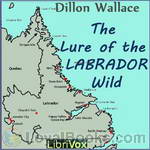 The Lure of the Labrador Wild
The Lure of the Labrador Wild
The Lure Of The Labrador Wild is a account of a expedition by Leonidas Hubbard, an adventurer and journalist to canoe the system Naskaupi River - Lake Michikamau in Labrador and George River in Quebec. His companions on this journey were his friend, New York lawyer Dillon Wallace and an Indian guide from Missannabie, George Elson. From the start, the expedition was beset with mistakes and problems. Instead of ascending the Naskaupi River, by mistake they followed the shallow Susan Brook. After hard long portaging and almost reaching Lake Michikamau, with food supplies running out, on September 15 at Windbound lake, they decided to turn back... | |
By: Tommaso Campanella (1568-1639) | |
|---|---|
 City of the Sun
City of the Sun
A dialogue between a Grandmaster of the Knights Hospitallers and a Genoese Sea-captain, about the latter's voyage to a utopian city. | |
By: Frances Trollope (1779-1863) | |
|---|---|
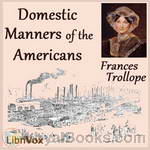 Domestic Manners of the Americans
Domestic Manners of the Americans
Next to de Alexis de Tocquville's almost contemporary Democracy in America, Frances Trollope's work may be the most famous (or at least notorious) dissection of manners and morals of the United States. The work was a sensation on both sides of the Atlantic, and particularly in America, where Trollope was reviled as representing the worst of old world prejudices the new republic (though the criticism did nothing to hurt sales).Accompanied by a son and two daughters, Trollope lived in the United States... | |
By: James Orton (1830-1877) | |
|---|---|
 The Andes and the Amazon
The Andes and the Amazon
This book, with the subtitle "Across the Continent of South America" describes the scientific expedion of 1867 to the equatorial Andes and the Amazon. The route was from Guayaquil to Quito, over the Cordillera, through the forest to Napo, and, finally, on the Rio Napo to Pebas on the Maranon. Besides this record, the expedition - under the auspices of the Smithsonian Institute - collected samples of rocks and plants, and numerous specimen of animals. The scientists also compiled a vocabulary of local languages and produced a new map of equatorial America... | |
By: Thomas Stevens (1854-1935) | |
|---|---|
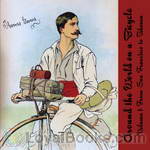 Around the World on a Bicycle, Vol. 1
Around the World on a Bicycle, Vol. 1
Thomas Stevens was the first person to circle the globe by bicycle, a large-wheeled Ordinary. His journey started in April 1884 in San Francisco from where he cycled to Boston to take a steamer to England. Crossing England, France, Central Europe and Asia Minor before he was turned back at the borders of Afghanistan. He returned part of the way to take a ship to Karachi, from where he crossed India. Another steam ship brought him from Calcutta to Hong Kong, and from Shanghai he set over to Japan, finally ending his journey after actually cycling 13... | |
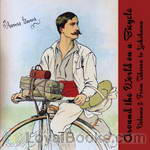 Around the World on a Bicycle, Vol. 2
Around the World on a Bicycle, Vol. 2
Thomas Stevens was the first person to circle the globe by bicycle, a large-wheeled Ordinary. His journey started in April 1884 in San Francisco from where he cycled to Boston to take a steamer to England. Crossing England, France, Central Europe and Asia Minor before he was turned back at the borders of Afghanistan. He returned part of the way to take a ship to Karachi, from where he crossed India. Another steam ship brought him from Calcutta to Hong Kong, and from Shanghai he set over to Japan, finally ending his journey after actually cycling 13... | |
By: Alice Bacon (1858-1918) | |
|---|---|
 Japanese Girls and Women
Japanese Girls and Women
A clear and delightful peek into the world of Japanese girls and women of the late 1800s: their childhood, education, marriage and intimate family life. And it is done by someone who admires the immense resources, abilities and strength shown by all of these girls and women. The intricate customs that bind the society together and must be learned by every girl, such as the annual Doll ceremony are explained as well as the difficult life of a Japanese wife of this period. Life among the nobles and upper class in the courts and castles, something long hidden away, is explored... | |
By: Henry Festing Jones (1851-1928) | |
|---|---|
 Diversions in Sicily
Diversions in Sicily
Samuel Butler's biographer dedicates his urbane account of the culture and entertainments of rural Sicily to the unborn son of his guide to them. | |
By: Lady Sarah Wilson (1865-1929) | |
|---|---|
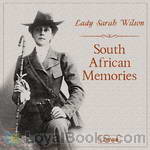 South African Memories
South African Memories
Lady Sarah Isabella Augusta Wilson was the aunt of Winston Spencer Churchill. In 1899 she became the first woman war correspondent when she was recruited to cover the Siege of Mafeking for the Daily Mail during the Boer War. She moved to Mafeking with her husband at the start of the war, where he was aide-de-camp to Colonel Robert Baden-Powell. Baden-Powell asked her to leave Mafeking for her own safety after the Boers threatened to storm the British garrison. This she duly did, and set off on a... | |
By: Julian Street | |
|---|---|
 American Adventures
American Adventures
AMERICAN ADVENTURES, A SECOND TRIP ABROAD AT HOMEBY JULIAN STREETCHAPTER IHad my companion and I never crossed the continent together, had we never gone abroad at home, I might have curbed my impatience at the beginning of our second voyage. But from the time we returned from our first journey, after having spent some months in trying, as some one put it, to discover America, I felt the gnawings of excited appetite. The vast sweep of the country continually suggested to me some great delectable repast:... | |
By: Mabel Bent (c.1847-1929) | |
|---|---|
 Southern Arabia
Southern Arabia
Southern Arabia recounts a threatening four-month journey into North Eastern Ethiopia by the Bents. These brave travelers were the first to travel without disguise in a region where Westerners had formerly been fortunate to escape with their lives. | |
By: Douglas Grant (aka Isabel Ostrander) (1883-1924) | |
|---|---|
 Anything once
Anything once
An unlikely pair of wanderers they were; the orphan girl Lou and her travelling partner Jim Botts. Jim appeared in need of following some apparent 'rules' during the journey, while Lou seemed in need of better clothing, and perhaps some refinement. But who was most benefitting whom on the week-long journey from rural village to big city? And which of the two was willing to try anything once? (Introduction by Roger Melin) | |
By: George Bethune English (1787-1828) | |
|---|---|
 A Narrative of the Expedition to Dongola and Sennaar
A Narrative of the Expedition to Dongola and Sennaar
As a second lieutenant in the United States Marine Corps during the War of 1812 assigned to Marine Corps headquarters, English sailed to the Mediterranean, and was among the first citizens of the United States known to have visited Egypt. Shortly after arriving in Egypt he resigned his commission, converted to Islam and joined Isma'il Pasha in an expedition up the Nile River against Sennar in 1820, winning distinction as an officer of artillery. He published his Narrative of the Expedition to Dongola and Sennaar (London 1822) regarding his exploits. (Introduction adapted by obform from Wikipedia) | |
By: Jeannie Gunn (1870-1961) | |
|---|---|
 We of the Never-Never
We of the Never-Never
We of the Never Never is the second book written by Jeannie Gunn under the name of “Mrs Aeneas Gunn”. It is considered by many as a classic of Australian writing. The book was published as a novel but draws on the author’s own experience in settling on the Elsey Station way out in the "back blocks" of the Katherine region of the Northern Territories of Australia early in the 20th century. The primary concession to fiction was that she fictionalised the names of many of the real-life characters that featured in her life at the time, giving them names like "the Sanguine Scott", "the Fizzer", "the Quiet Stockman" and "the Dandy"... | |
By: Randolph B. Marcy (1812-1887) | |
|---|---|
 Prairie Traveler
Prairie Traveler
Commissioned by the US War Department and written in 1859 by a decorated US Army captain, The Prairie Traveler is a complete how-to travel guide for the westward-bound pioneer. Covering topics from first aid for rattlesnake bites to how to travel 70 miles across the desert without water for one's livestock, the guide includes 28 travel itineraries with mileage and firewood availability. | |
By: Reuben Gold Thwaites (1853-1913) | |
|---|---|
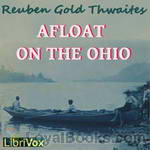 Afloat on the Ohio
Afloat on the Ohio
Afloat on the Ohio, An Historical Pilgrimage, of a Thousand Miles in a Skiff, From Redstone to Cairo.There were four of us pilgrims—my Wife, our Boy of ten and a half years, the Doctor, and I. My object in going—the others went for the outing—was to gather "local color" for work in Western history. The Ohio River was an important factor in the development of the West. I wished to know the great waterway intimately in its various phases,—to see with my own eyes what the borderers saw; in imagination, to redress the pioneer stage, and repeople it. ( From the Preface ) | |
By: Agnes Edwards (1888-1954) | |
|---|---|
 Old Coast Road From Boston to Plymouth
Old Coast Road From Boston to Plymouth
A delightful trip from Boston through a dozen South Shore towns to Plymouth, stopping in each to explore a bit of the local history and 'modern' highlights. Written in 1920, it's a great journey through the past. | |
By: Unknown | |
|---|---|
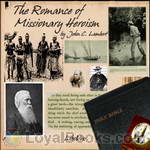 The Romance of Missionary Heroism
The Romance of Missionary Heroism
The title page gives this book the subtitle, “True stories of the intrepid bravery and stirring adventures of missionaries with uncivilized man, wild beasts, and the forces of nature in all parts of the world.” The thrilling accounts in this collection include stories of Jacob Chamberlain’s medical ministry in India, the dangers faced by Alexander Mackay in Uganda, James Chalmers’ work among the headhunters of New Guinea, John Paton’s mission to the South Sea cannibals, and the Hawaiian queen Kapiolani’s challenge to the gods of the volcano... | |
By: Various | |
|---|---|
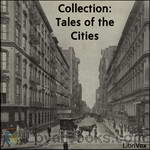 Collection: Tales of the Cities
Collection: Tales of the Cities
This is a collection of city stories, fiction or non-fiction, in English and published before 1923. Contributions have been chosen by the reader himself. | |
By: John Lloyd Stephens (1805-1852) | |
|---|---|
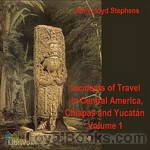 Incidents of Travel in Central America, Chiapas, and Yucatan, Vol. 1
Incidents of Travel in Central America, Chiapas, and Yucatan, Vol. 1
The year is 1838. The scene is the dense Honduran forest along the Copán River. Two men, John Lloyd Stephens and Frederick Catherwood, are about to rediscover Mayan civilization. Their guide, slashing through the rampant growth with his machete, leads them to a structure with steps up the side, shaped like a pyramid. Next they see a stone column, fourteen feet high, sculptured on the front with a portrait of a man, “solemn, stern and well fitted to excite terror,” covered on the sides with hieroglyphics, and with workmanship “equal to the finest monuments of the Egyptians... | |
By: Mark Twain (1835-1910) | |
|---|---|
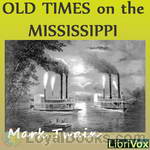 Old times on the Mississippi
Old times on the Mississippi
Old Times on the Mississippi is a non-fiction work by Mark Twain. It was published in 1876. Originally published in serial form in the Atlantic Monthly, in 1875, this same work was published as chapters 4 through 17 in Twain's later work, Life on the Mississippi (1883). Old Times on the the Mississippi has one last chapter that has nothing to do with the rest of the book. A Literary Nightmare describes the funny/sad/maddening effect that a catchy jingle can have on those unlucky enough to be captured by one. | |
By: Edna Brush Perkins (1880-1930) | |
|---|---|
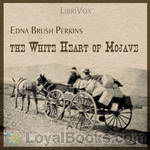 The White Heart of Mojave
The White Heart of Mojave
"The White Heart of the Mojave" recounts a 1920's adventure "in the wind and sun and big spaces" of Death Valley by two independent minded women, Edna Brush Perkins and Charlotte Hannahs Jordan. Both women were early feminists, Edna as chairwoman of the greater Cleveland Woman's Suffrage Party (1916-18). At the end of the Great War, the two friends wanted nothing more than to escape "to the solitariness of some wild and lonely place far from city halls, smokestacks, national organizations, and streets of little houses all alike... | |
By: Washington Irving (1783-1859) | |
|---|---|
 The Alhambra: A Series of Tales and Sketches of the Moors and Spaniards
The Alhambra: A Series of Tales and Sketches of the Moors and Spaniards
This is a collection of essays, verbal sketches, and stories by Washington Irving. Irving lived at the Alhambra Palace while writing some of the material for his book. In 1828, Washington Irving traveled from Madrid, where he had been staying, to Granada, Spain. At first sight, he described it as "a most picturesque and beautiful city, situated in one of the loveliest landscapes that I have ever seen." He immediately asked the then-governor of the historic Alhambra Palace as well as the archbishop of Granada for access to the palace, which was granted because of Irving's celebrity status... | |
By: Francis Archibald Bruton (1869-1929) | |
|---|---|
 Lancashire
Lancashire
The county of Lancashire in the north-west of England is best known as the engine room of the nineteenth-century Industrial Revolution. Steering clear of the industrial districts, F. A. Bruton takes the reader on an engaging tour of the county's beauty spots and lesser known landscapes. Taking the view that the charm of a district is nothing without its historical associations, Bruton packs his account with historical detail and literary references to, among others, Leland, Wordsworth, Ruskin, Arnold, and Mrs. Carlyle. (Introduction by Phil Benson) | |
By: James T. Nichols (1865-?) | |
|---|---|
 Birdseye Views of Far Lands
Birdseye Views of Far Lands
Birdseye Views of Far Lands is an interesting, wholesome presentation of something that a keen-eyed, alert traveler with the faculty of making contrasts with all classes of people in all sorts of places, in such a sympathetic way as to win their esteem and confidence, has been able to pick up as he has roamed over the face of the earth for a quarter of a century.The book is not a geography, a history, a treatise on sociology or political economy. It is a Human Interest book which appeals to the reader who would like to go as the writer has gone and to see as the writer has seen the conformations of surface, the phenomena of nature and the human group that make up what we call a "world... | |
By: John Lloyd Stephens (1805-1852) | |
|---|---|
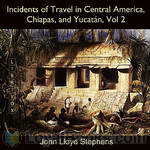 Incidents of Travel in Central America, Chiapas, and Yucatán, Vol. 2
Incidents of Travel in Central America, Chiapas, and Yucatán, Vol. 2
The year is 1838. The scene is the dense Honduran forest along the Copán River. Two men, John Lloyd Stephens and Frederick Catherwood, are about to rediscover Mayan civilization. Their guide, slashing through the rampant growth with his machete, leads them to a stone column, fourteen feet high, sculptured on the front with a portrait of a man, “solemn, stern and well fitted to excite terror,” covered on the sides with hieroglyphics, and with workmanship “equal to the finest monuments of the Egyptians... | |
By: William Alexander MacKay (1842-1905) | |
|---|---|
 Zorra Boys at Home and Abroad, or, How to Succeed
Zorra Boys at Home and Abroad, or, How to Succeed
By Zorra, in the following sketches, is meant a little district in Oxford county, Ontario, some ten miles square, composed of part of East and part of West Zorra, and containing a population of about fourteen hundred. It was settled about the year 1830, chiefly by Highlanders from Sutherlandshire, Scotland.Within the last forty years there have gone from this district over one hundred young men who have made their mark in the world. With most of these it has been the writer's good fortune to be personally and intimately acquainted; and companionship with some of them has been to him a pleasure and a benefit... | |
By: Haji A. Browne | |
|---|---|
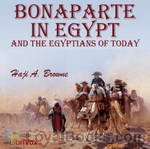 Bonaparte in Egypt and the Egyptians of To-day
Bonaparte in Egypt and the Egyptians of To-day
Knowing the Egyptian as I know him, I cannot but think that he is greatly misunderstood, even by those who are sincerely anxious to befriend him. His faults and his failings are to be found at large in almost any of the scores of books that have of late years been written about him and his country; but, though not a few have given him credit for some of his more salient good points, yet none that I have seen have shown any just appreciation of him as he really is. (From the Preface) | |
By: John Charles Van Dyke (1856-1932) | |
|---|---|
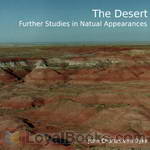 The Desert, Further Studies in Natural Appearances
The Desert, Further Studies in Natural Appearances
The Desert by John Charles Van Dyke, published in 1901, is a lush, poetic description of the natural beauty of the American Southwest. "What land can equal the desert with its wide plains, its grim mountains, and its expanding canopy of sky!" Van Dyke, a cultivated art historian, saw "sublimity" in the desert's "lonely desolation," which previous generations had perceived only as a wasteland, and his book has a conservationist flavor which seems distinctly modern. "The deserts should never be reclaimed," he writes... | |
By: Queensland Railways | |
|---|---|
 Tours in the South Coast District
Tours in the South Coast District
An early booklet, designed to encourage tourism in the northern parts of New South Wales, and the southern parts of Queensland, particularly the area now in the Gold Coast.(Introduction by Timothy Ferguson) | |